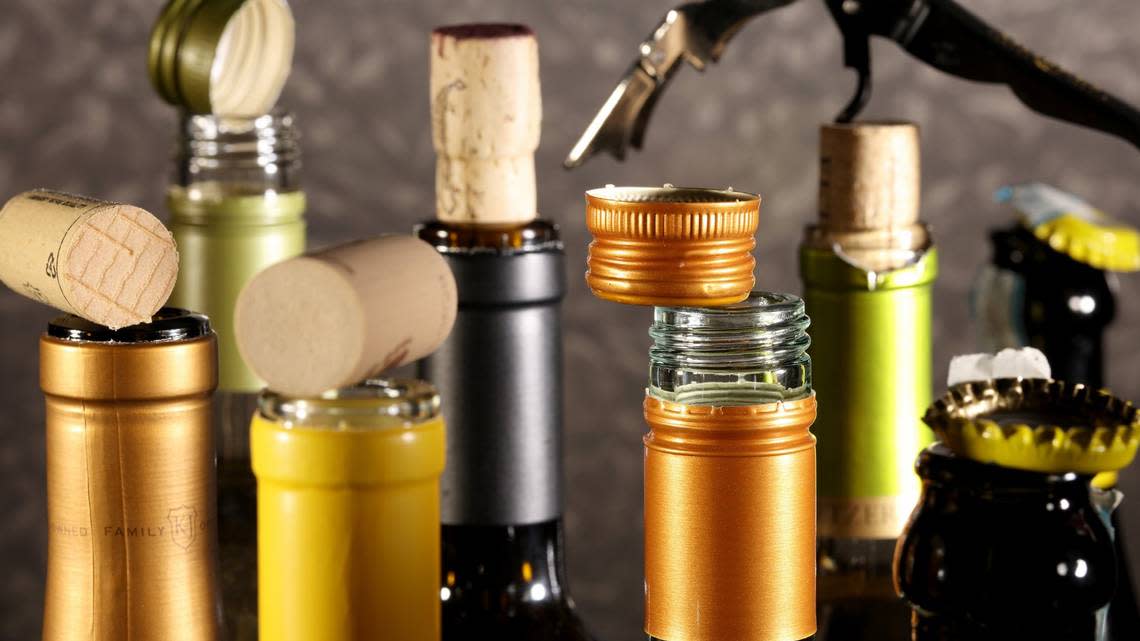Modesto wine columnist: Why people don’t drink more Champagne

Champagne is delicious, readily available, food friendly and not very expensive, so why don’t we drink it year-round? I guess we’re programmed to think it’s just for New Years Eve and special events … and what’s that? When Madam Lily Bollinger of Bollinger Champagne was asked by a reporter when she drinks champagne, she replied, “I drink it when I’m happy and when I’m sad. Sometimes I drink when I’m alone. When I have company, I consider it obligatory. I trifle with it if I’m not hungry and drink it when I am. Otherwise never touch it … unless I’m thirsty.”
To be called Champagne, the wine must come from the Champagne region of France. The region is 90 miles northeast of Paris, has a very cool climate and is known for it’s chalky soils which produce highly acidic wines. Three grapes can be used to make Champagne: Pinot Noir, Pinot Meunier and Chardonnay. It is made by a process called Methode Champenoise which includes a secondary fermentation in the bottle creating those wonderful bubbles.
In the United States we refer to Champagne as Sparkling Wine, in Spain it is called Cava and in Germany it’s Sekt, Prosecco or Spumante in Italy, and in the other regions of France it is labeled Cremant. Because of the secondary fermentation in the bottle, the pressure inside is about 90 pounds per square inch, so knowing how to open the bottle is very important for you and those around you.
Make sure the bottle is well chilled. Cut off the foil, keeping your hand on the cork at all times and pointing the bottle 45 degrees away from you, undue the wire cage and place a cloth napkin over the cork, twist the base of the bottle clockwise and the cork counterclockwise … the cork should ease right out with a sound of a quiet “phftt.” The sweetness of Champagne is noted the label. Brut means dry, Extra Dry means sweeter than Brut and Sec means semi-sweet which is very sweet. How about a bubbly for dinner tonight?
Calaveras wineries score gold
At the 43rd annual Sierra Foothills Wine Competition a total of 19 Double Gold Awards, 33 Gold Awards, 92 Silver Awards and 55 Bronze Awards were presented. The Calaveras Winegrape Alliance members took home the top awards. Here are the Gold winners: Black Sheep ’21 Zinfandel took a DG and the Best of Calaveras Red & Zinfandel Challenge Winner. Ironstone Vineyard scored two DGs with ’21 Red Blend and ’21 Chardonnay ’Reserve’ and a Gold for the ’21 Meritage ‘Reserve’. Tanner Vineyards took a DG for the 2019 Petite Verdot and a Gold for the ’22 Vermentino. Milliaire Winery took two Golds for the ’21 Malbec and the ’20 Touriga. Hovey Winery scored two Golds for their ’22 Chardonnay, the 2019 Red Blend ’Founders Blend’.
These CWA Wineries took Golds: Gossamer Cellars ’19 Barbera, Hatcher Winery 2019 Merlot, Newsome Harlow ’23 Sauvignon Blanc, School Street Wines ’23 Pinot Grigio and Best of Show White. Val du Vino Winery ’21 Red Blend ‘3 Cousins’. Nice job CWA.
What’s on our table
McManis Family Vineyards took eight Silver Medals and six Bronze in the 2024 California State Fair Competition. The Silver awards were: ’21 Cabernet Sauvignon (91), NV Brut (91), ’22 Pinot Noir (91), ’22 Merlot (91), ’22 Petite Syrah (91), ’23 Pinot Grigio (88), ’22 Chenin Blanc/Viognier (88) and the ’22 Viognier (88).
Recently Wine Enthusiast magazine recognized McManis Family Vineyards with four “Best Buys” designations and all are from the Lodi Appellation. The ’22 Merlot, $10, and the ’22 Pinot Noir, $12, both earned 92 points. The ’22 Petite Syrah, $12, earned 91 and the ’22 Cabernet Sauvignon, $12, earned 90. Award-winning wines available in your supermarket at affordable prices, well done McManis Family. Cheers!
Questions? Comments? Find me on Facebook or at rgwinton@yahoo.com.


